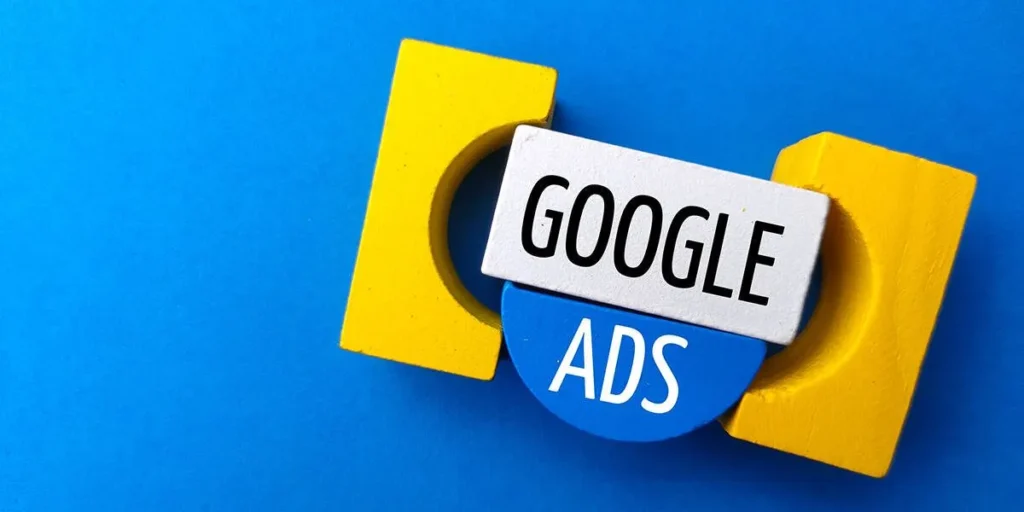Google Ads optimization is essential for achieving consistent, cost-effective results in online advertising. In today’s highly competitive digital environment, simply setting up a campaign and letting it run is not enough. Optimization involves a series of continuous improvements and data-driven decisions that enhance campaign performance and reduce wasted spend. When businesses take the time to optimize their Google Ads, they are essentially fine-tuning their visibility and messaging to meet customer intent more precisely. Whether your goal is brand awareness, lead generation, or e-commerce sales, optimization ensures that your ads are seen by the right audience under the right context. Businesses that ignore this process risk paying more per click, receiving unqualified traffic, and ultimately falling behind their more strategic competitors.
Building a Strong Campaign Structure
A strong, logical campaign structure is the foundation of successful Google Ads optimization. A well-organized structure helps maintain control over ad spend, ensures better targeting, and improves the user experience. Campaigns should be broken down into themes, and each ad group should focus on a narrow, specific set of keywords. For example, an online clothing store might have separate campaigns for men’s and women’s apparel, and within each, ad groups for jeans, shirts, or accessories. This segmentation allows for more accurate ad messaging and easier performance tracking. Additionally, naming conventions and grouping strategies should be consistent and scalable. A clearly structured campaign reduces confusion and makes it easier to implement optimizations over time. It also helps align your keywords, ads, and landing pages, which improves Quality Score—a vital metric in Google Ads optimization.
Conducting Thorough Keyword Research
Effective Google Ads optimization relies heavily on deep and ongoing keyword research. Your choice of keywords directly impacts how your ads are triggered, who sees them, and how much you pay. Start by identifying terms that your target audience is searching for—those that demonstrate clear commercial intent. Use tools like Google Keyword Planner, SEMrush, or Ahrefs to find keyword opportunities with a balance of high relevance and achievable competition. Don’t just stop at primary keywords; long-tail keywords often convert better because they match specific searcher intent. Also, analyze search trends and seasonal patterns to adjust your keyword strategy throughout the year. Continuously updating and refining your keyword list is key to staying competitive and relevant. Google Ads optimization is an ongoing cycle, and the more precise and thoughtful your keyword selection, the better your chances of driving high-quality traffic.
Utilizing Negative Keywords
One of the most overlooked yet powerful aspects of Google Ads optimization is the use of negative keywords. These are keywords that you explicitly tell Google not to trigger your ads for. This ensures that your ads don’t show up for irrelevant or low-quality searches, saving you money and improving campaign efficiency. For example, if you’re selling luxury watches, you might want to add “cheap watches” or “free watches” as negative keywords. Including such terms prevents clicks from users who are unlikely to convert. It’s important to review search term reports regularly and add negative keywords based on what users are actually searching for. Additionally, think about synonyms, close variations, and industry-specific language that might bring unqualified traffic. Google Ads optimization should always include a robust negative keyword strategy to ensure that every click has the potential to convert.
Writing Compelling Ad Copy
Ad copy is your first and sometimes only chance to capture a user’s attention and convince them to click. Google Ads optimization includes crafting ad copy that not only grabs attention but also aligns with search intent and drives conversions. Effective ad copy speaks directly to the user’s needs, highlights benefits, and creates a sense of urgency or value. Headlines are the most visible part of your ad, so they must be punchy, relevant, and keyword-rich. Use emotional triggers or power words like “exclusive,” “limited-time,” or “free trial” when appropriate. Descriptions should support the headline by offering more details or reinforcing your unique selling proposition. Testing is critical—run A/B tests on different headlines, calls to action, and value propositions to identify what resonates best with your audience. Google Ads optimization is all about refining each element of your ad based on data, and copywriting is no exception.
Enhancing Ad Relevance and Quality Score

Quality Score is a metric used by Google to measure the overall effectiveness and relevance of your ads. It directly affects your ad position and the cost per click, making it a central focus in Google Ads optimization. The Quality Score is based on three main components: expected click-through rate (CTR), ad relevance, and landing page experience. Improving any of these factors can boost your score, which in turn lowers costs and improves visibility. To enhance ad relevance, ensure your ad copy includes the same keywords as your ad group and closely aligns with the search query. Match your landing page content with the ad’s promise, provide a seamless experience, and make it easy for users to take action. A higher Quality Score indicates that your ad is providing value to users, which Google rewards with better placements and reduced costs. Google Ads optimization should continually aim to improve this score by tweaking ads, targeting, and landing page performance.
Leveraging Ad Extensions
Ad extensions provide additional space and information in your ads, making them more useful and noticeable. Google Ads offers a range of extension types, including sitelinks, callouts, structured snippets, call extensions, and more. These not only increase the physical size of your ad on the search results page, which can improve visibility, but also offer more opportunities for users to engage. For instance, sitelink extensions can direct users to specific pages like a clearance sale or a contact form, while call extensions allow users to contact your business directly from the ad. The strategic use of ad extensions is a key component of Google Ads optimization. They should be tested regularly to determine which combinations yield the best results. Keep in mind that extensions must be relevant and valuable to the user—irrelevant or poorly written extensions can dilute your message and reduce performance. When used effectively, ad extensions enhance CTR and improve overall campaign results.
Optimizing Landing Pages for Conversion
The effectiveness of your ad doesn’t end with a click—it continues on the landing page. Google Ads optimization must include a close look at the post-click experience. Landing pages should be fast-loading, mobile-friendly, and laser-focused on a single call to action. Cluttered or confusing layouts can quickly drive users away, while clean, focused designs encourage conversion. Ensure your page headline matches the ad and provides immediate value. Visual hierarchy, trust signals (like reviews or certifications), and compelling copy all help guide the user toward your desired action. Use tools like Google Optimize or Hotjar to test different versions of your landing pages and analyze user behavior. Page speed also plays a major role in user experience and is a ranking factor in Quality Score. Investing time in landing page optimization leads to higher conversions, lower bounce rates, and better alignment with your Google Ads strategy.
Monitoring and Adjusting Bids
Bid management is another critical aspect of Google Ads optimization. Your bid strategy determines how much you’re willing to pay for each click and how aggressively your ads compete in the auction. Depending on your goals—be it clicks, impressions, or conversions—choose an appropriate bidding strategy such as Target CPA, Target ROAS, Maximize Clicks, or Enhanced CPC. However, don’t rely entirely on automation. Manual adjustments based on performance data can help you allocate budget more effectively. For instance, if certain keywords are performing exceptionally well, consider increasing their bids to capture more impressions. Similarly, reduce bids or pause underperforming keywords. Consider time-of-day and day-of-week performance as well; if your ads perform better in the evening or on weekends, schedule your bids accordingly. Google Ads optimization involves a careful balance of automation and manual intervention to ensure your budget is being used as efficiently as possible.
Using Audience Targeting and Segmentation
Modern Google Ads campaigns are no longer just about keywords—they’re also about understanding who your audience is and how to reach them. Google Ads optimization includes leveraging audience targeting tools such as affinity audiences, in-market segments, remarketing lists, and customer match. These tools allow you to deliver more personalized ads to users who are more likely to convert. For example, remarketing allows you to re-engage users who previously visited your site but didn’t convert, giving you a second chance to win them over. Use demographic targeting to exclude or prioritize age groups, genders, or household incomes that align with your customer profile. Audience segmentation also allows for tailored messaging; the same product can be pitched differently to different segments. Google Ads optimization is most effective when both keyword intent and audience behavior are taken into account, creating highly focused campaigns that drive meaningful results.
Analyzing Performance and Iterating
No campaign is perfect from the start, which is why regular performance analysis is key to long-term success. Google Ads optimization requires continuous monitoring of core metrics such as impressions, CTR, average CPC, conversion rate, and return on ad spend (ROAS). Use Google Ads’ built-in reporting features and integrate with Google Analytics for deeper insights. Look for trends and patterns over time, and don’t be afraid to test new ideas. Perhaps one ad variation performs better with mobile users, or a specific landing page drives more sign-ups on weekends. Make data-driven decisions and iterate frequently. Also, keep an eye on competitor activity—tools like SpyFu or Auction Insights can give you an idea of how you’re positioned. Optimization is an ongoing effort, not a one-time setup. Consistently testing, analyzing, and adapting ensures that your campaigns remain effective and profitable in a changing marketplace.
Conclusion
Google Ads optimization is not just a best practice—it’s a necessity for any business that wants to compete effectively in the digital advertising landscape. From setting up a solid campaign structure and researching the right keywords to writing compelling ad copy, managing bids, and improving landing pages, each element plays a vital role in achieving success. A well-optimized campaign drives better results, lowers costs, and maximizes return on investment. It also ensures that you’re not just reaching users, but converting them. As search trends shift and user behavior evolves, continuous optimization keeps your campaigns aligned with business goals and market demands. Investing time and effort into ongoing Google Ads optimization will pay off with stronger performance, greater efficiency, and a sustainable competitive edge.
















